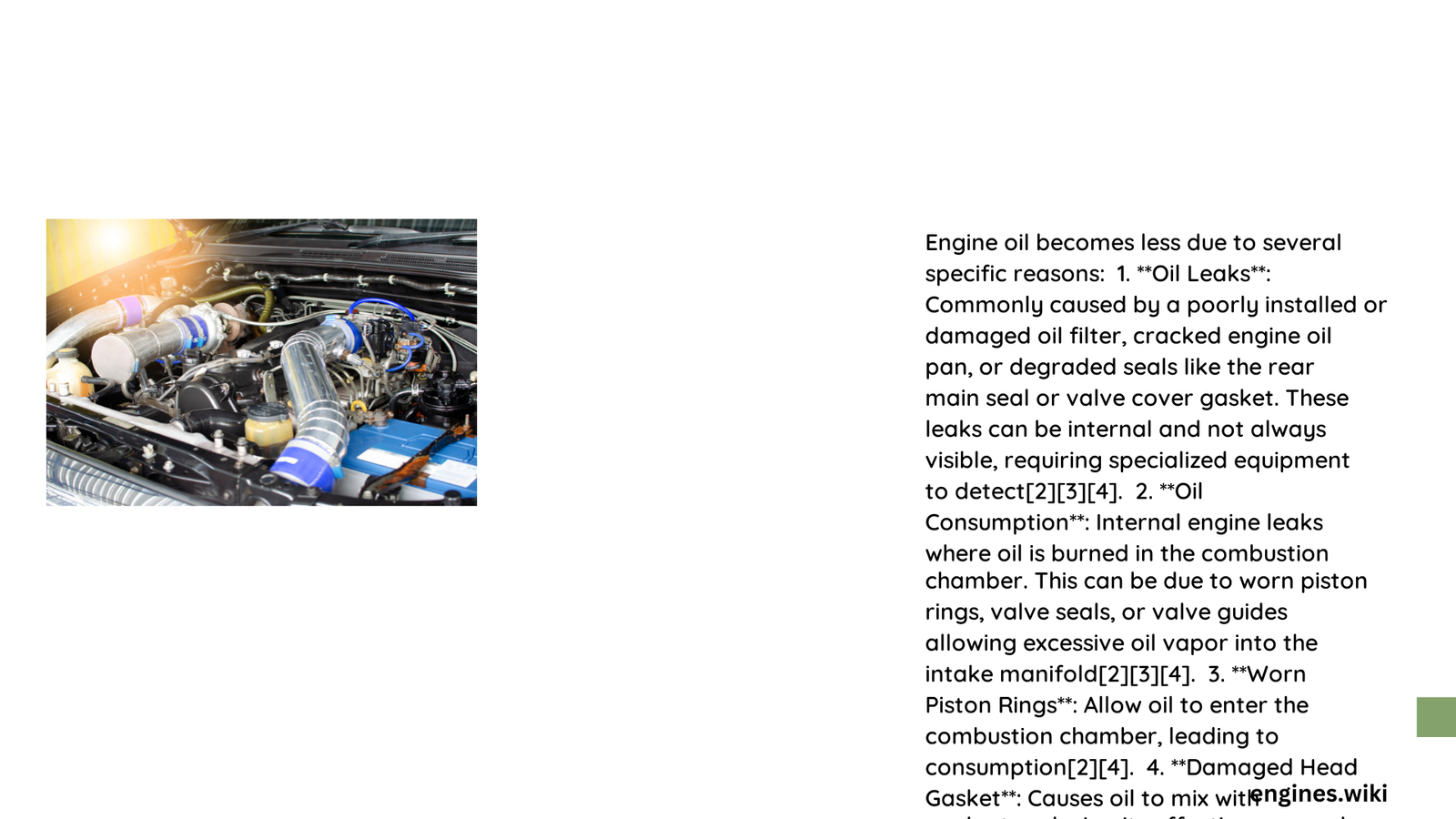Engine oil reduction is a complex phenomenon that can significantly impact vehicle performance and longevity. Vehicles experience oil loss through multiple mechanisms, including mechanical wear, seal degradation, and environmental factors. Understanding these processes helps vehicle owners prevent premature engine damage and maintain optimal lubrication systems. Engine oil becomes less due to intricate interactions between mechanical components, operating conditions, and inherent material limitations.
What Causes Rapid Engine Oil Reduction?
Mechanical Wear and Component Breakdown
Engine oil reduction stems from several critical mechanical factors:
| Mechanical Factor | Impact on Oil Consumption | Potential Consequences |
|---|---|---|
| Worn Piston Rings | High Oil Passage | Increased Oil Burning |
| Damaged Valve Seals | Oil Leakage | External and Internal Oil Loss |
| Cylinder Wall Deterioration | Increased Friction | Accelerated Oil Consumption |
Key Mechanical Breakdown Indicators
- Piston Ring Wear: Creates larger gaps allowing oil seepage
- Gasket Degradation: Permits oil leakage around engine components
- Bearing Surface Erosion: Increases internal oil circulation problems
How Temperature Affects Oil Volume?
Temperature plays a crucial role in oil volume and consumption:
- High Temperature Effects
- Molecular structure breakdown
- Faster oil oxidation
-
Increased viscosity reduction
-
Low Temperature Challenges
- Increased oil thickness
- Reduced lubrication efficiency
- Potential seal compression issues
Why Do Seals Contribute to Oil Loss?
Seal degradation represents a significant factor in oil reduction:
- Rubber Seal Hardening: Reduces elasticity and sealing capability
- Thermal Stress: Causes microscopic cracks
- Chemical Breakdown: Weakens seal material integrity
Quantifying Oil Consumption Rates
Typical oil consumption varies across vehicle types:
- Passenger Cars: 0.1-0.3% per fuel consumption cycle
- Heavy Machinery: Up to 1% per operational hour
- High-Performance Engines: Variable consumption based on design
Diagnostic Strategies for Oil Reduction
Recommended Inspection Techniques
- Regular oil level checks
- Comprehensive engine compression testing
- Detailed seal and gasket examination
- Professional diagnostic scanning
Prevention and Maintenance Recommendations
- Use Recommended Oil Grades
- Perform Regular Oil Changes
- Monitor Engine Performance
- Address Minor Leaks Immediately
Economic Impact of Unresolved Oil Reduction
Neglecting oil consumption issues can lead to:
– Increased repair costs
– Reduced engine lifespan
– Potential catastrophic engine failure
Technical Complexity of Oil Consumption
Oil reduction represents a multifaceted challenge requiring systematic approach and professional expertise. Vehicle owners must remain vigilant and proactive in monitoring their engine’s lubrication system.
Advanced Diagnostic Considerations
Modern vehicles incorporate sophisticated sensors and diagnostic systems capable of detecting minute changes in oil volume and quality. Leveraging these technologies provides early intervention opportunities.
Conclusion
Understanding why engine oil becomes less involves comprehensive analysis of mechanical, thermal, and chemical interactions within complex automotive systems.

